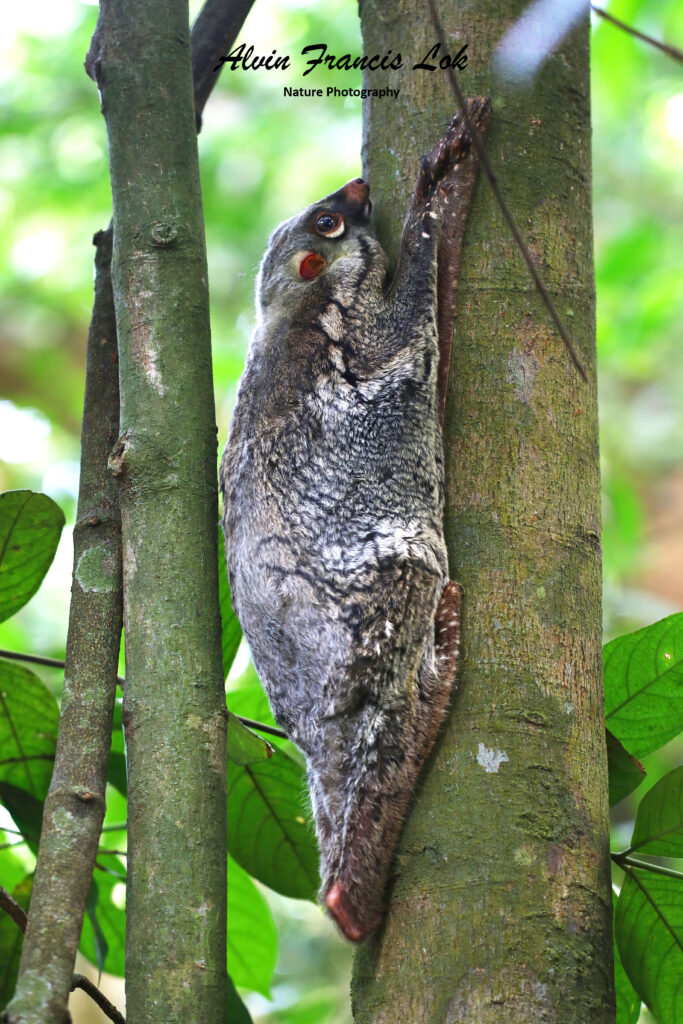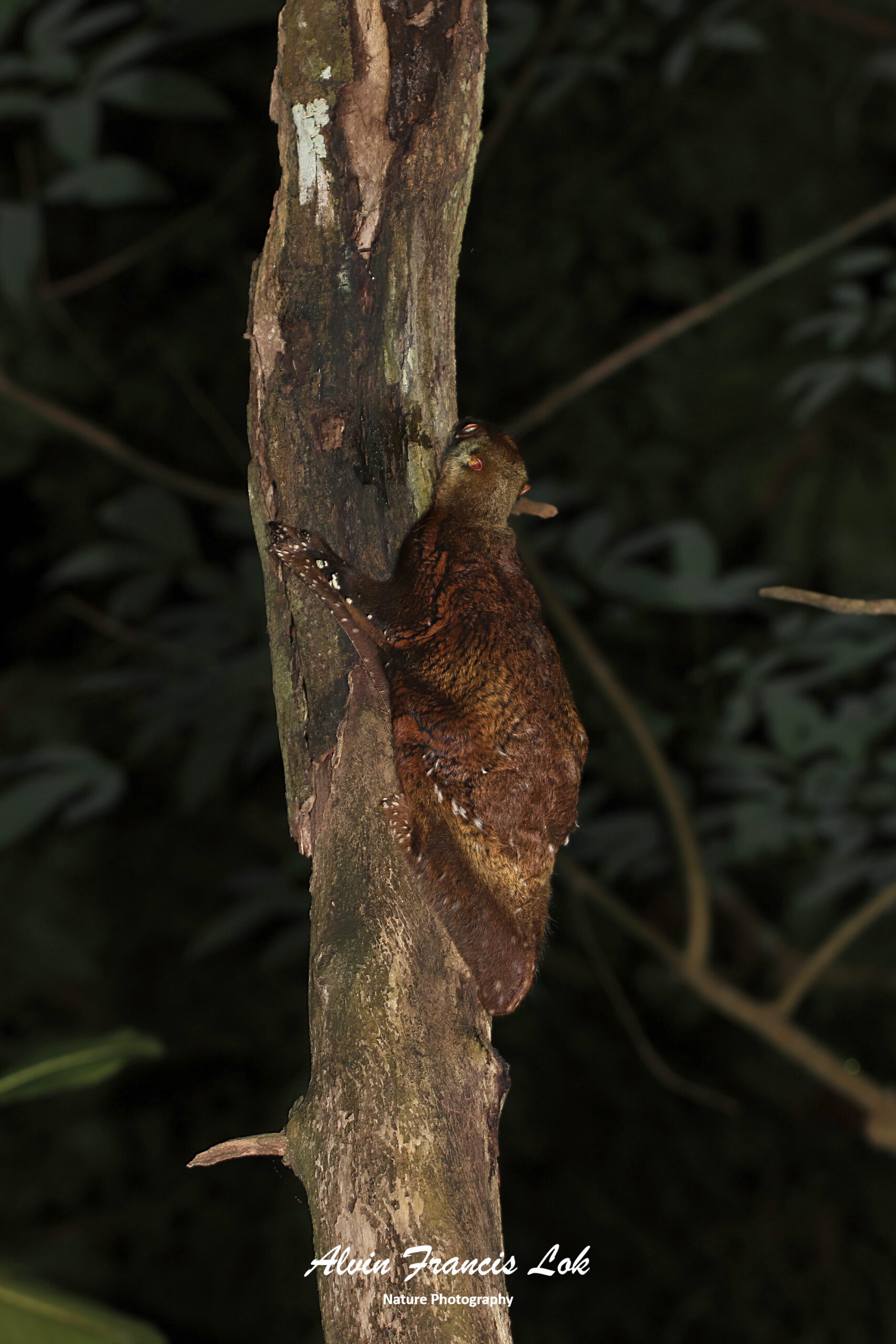The order Dermoptera consist of a single family Cynocephalidae which has 2 species of colugos: the Sunda flying lemur (Galeopterus variegatus) and the Philippine flying lemur (Cynocephalus volans).
The incisors of colugos are highly distinctive; they are comb-like in shape with up to 20 tines on each tooth.
Colugos are proficient gliders, and thought better adapted for flight than any other gliding mammal. They can travel as far as 70 m from one tree to another without losing much altitude. Their ability to glide is possible because of a large membrane of skin that extends between their paired limbs. This gliding membrane, or patagium, runs from the shoulder blades to the fore paws, from the tip of the rear-most fingers to the tip of the toes, and from the hind legs to the tip of the tail. The spaces between the colugo’s fingers and toes are webbed. As a result, colugos were once considered to be close relatives of bats. Today, on account of genetic data, they are considered to be more closely related to primates.
Colugos are shy, nocturnal, solitary animals found in the tropical forests of Southeast Asia. Consequently, very little is known about their behavior. They are herbivorous and eat leaves, shoots, flowers, sap, and fruit. They have well-developed stomachs and long intestines capable of extracting nutrients from leaves and other fibrous material.
Family Cynocephalidae
Galeopterus variegatus (Sunda Colugo) (Singapore)

